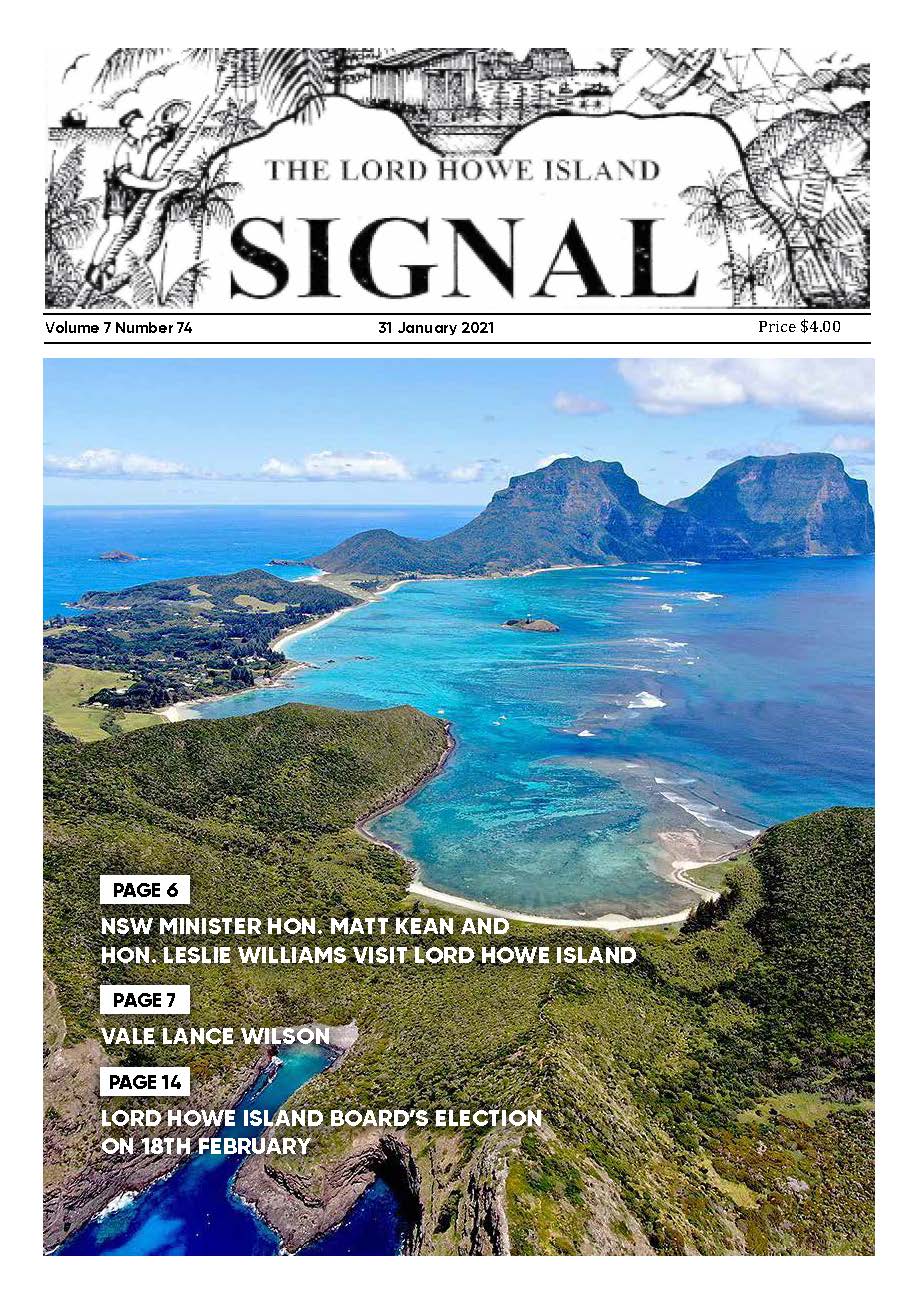Chris Murray, The Lord Howe Island Signal
On the 12th of October, 1936, the Daily Telegraph in Sydney voiced some vague anxiety about the welfare of a small motor launch, the Mystery Star, en route from Lord Howe to Sydney: “If the 16ft launch, Mystery Star, making the trip from Lord Howe Island to Sydney, 525 miles, does not reach Australia today, there is every likelihood it will encounter rough weather. The Mystery Star is being navigated by Brian Abbot and Leslie Hay Simpson, who have been at Lord Howe Island for the Commonwealth Film Laboratories’ production of Mystery Island. Although the journey was expected to take five days, ample provision has been made for contingencies”.
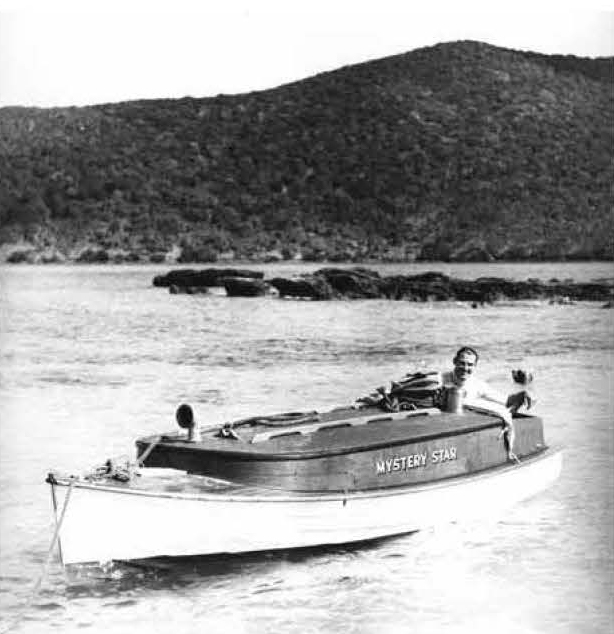
Abbott and Hay had, in fact, left Lord Howe at 10.15pm on the 6th of October and, under favourable conditions, might have been expected to reach the Australian coast on the 11th. As the days passed, however, public anxiety mounted. At the request of Abbot’s and Simpson’s families, a search was launched by the Minister for Defence, Archibald Parker, using an RAN Destroyer, Waterhen, and amphibious aircraft from the defence force. However, the Mystery Star was unlocatable and Abbott and Hay were never seen again.
The circumstances surrounding the Mystery Star’s disappearance will be examined in detail over the next three Signals. In the third episode, a guest writer, Nicole Cama, will tell us exactly what is known about the vessel’s final voyage.
However, a great many circumstances surrounded the decision of Brian Abbot and Leslie Hay Simpson to cross the Tasman, so we’ll try to lift the lid on a Pandora’s Box of mysteries: a movie with a Mystery title; a vessel called Mystery Star, and one final mystery – to be uncovered at the very end!
An exotic film setting – but oh … how to dislocate an island!
The movie, Mystery Island, was a 59 minute “supporting feature” produced by a private production company, Commonwealth Film Laboratories, in 1936. Whilst the company made documentaries for the Australian Government, it also invested in feature films, mostly employing Australian actors.
George Malcolm, production supervisor for the Laboratories, managed to excite media interest in the filming of Mystery Island by feeding the press tantalising scraps of [mis]information about the secrecy of the location. On the 14th of July, 1936, the Evening News, Rockhampton, reported, “The cast of 12 principals will leave Sydney early in September. More than 1,000 miles away in the Pacific, it will transfer to the Black Witch, a sailing ship which will take it about 80 miles to the Island.”
The Sydney press had also picked up the story: under the banner “Mystery Picture on Isle”, the Labour Daily wrote on the 14th July, “In order to keep the scene of location a strict secret the company concerned is not divulging the name nor whereabouts of the mystery island, except that it is somewhere in the Pacific and cannot be reached by steamer.”
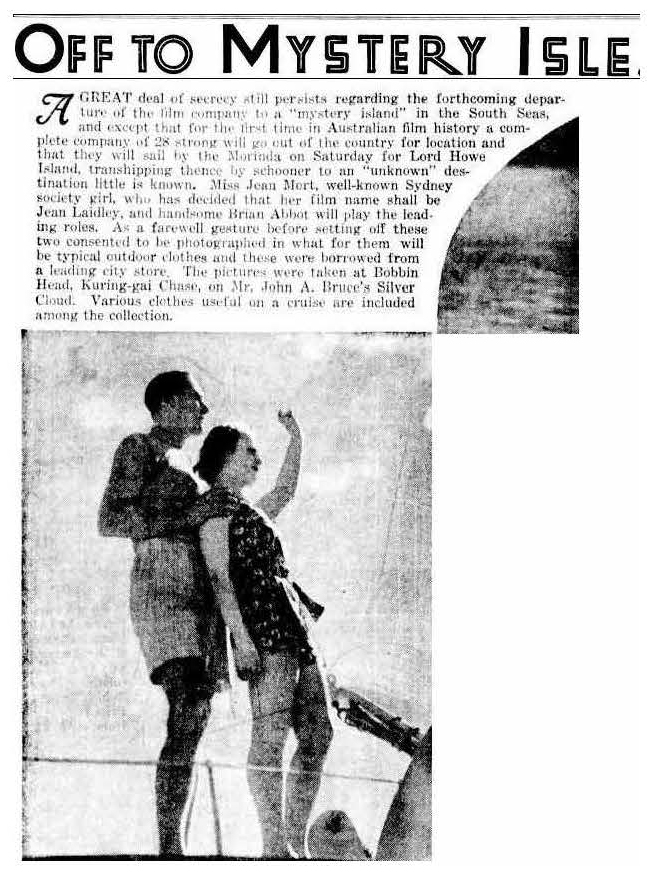
Again, on the 30th of August, under the headline “Off to Mystery Isle”, the Sydney Sun wrote “A great deal of secrecy still persists regarding the forthcoming departure of the film company to ‘mystery island’ in the South Seas and, except that for the first time in Australian film history a complete company of 28 strong will go out of the country for location, and that they will sail by the Morinda on Saturday for Lord Howe Island transhipping thence by shooner to an unknown destination, little is known”.
They might have been off to an unknown location, but it was still important for the cast to go fashionable clad: again, from The Sun, “Miss Jean Mort, well-known Sydney society girl, who has decided that her film name shall be Jean Laidley, and handsome Brian Abbot will play the leading roles.
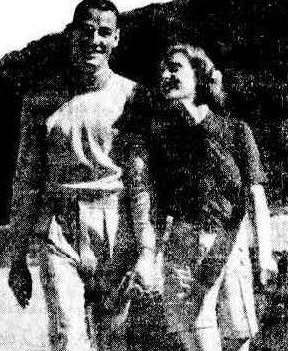
“As a farewell gesture before setting off these two consented to be photographed in what for them will be typical outdoor clothes and these were borrowed from a leading city store [Farmers Ltd]. The pictures were taken at Bobbin Head, Kuring-gai Chase, on Mr. John A. Bruce’s Silver Cloud [Rolls Royce]. Various clothes useful on a cruise are included among the collection”.
Despite the secrecy and mysterious geography surrounding the film set, the destination was always going to be Lord Howe Island. Much earlier, on the 31st of July, well before the press interest ignited, a very mundane minute of the Lord Howe Island Board of Control recorded “Commonwealth Film Laboratories Ltd: Application for Permission … Consideration was given to this request, as a result of which the Board decided that there would be no objection to the taking of pictures on the Island, provided that the company worked in conjunction with the Island Advisory Committee, which would be advised accordingly.”
One of the more perspicacious Sydney papers, The Daily Telegraph, reporting under the column “Show News by Josephine O’Neill” (24/8/36) declared unambiguously: “Lord Howe is the Mystery Island” (my italics): “Mystery Island, Commonwealth Film Laboratories’ picture, is to be made on Lord Howe Island. The production unit leaves Sydney by the Morinda on September 5, for a months’ work on this exotic location. The trip is being made with the sanction and co-operation of the Chief Secretary’s Department …”
Interestingly, some of the special effects, including a supposed shipwreck, were shot prior to the cast’s departure. The Labour Daily (1st August, 1936) reported: “Miniature Tempest in Movie Shot”: “High above Sydney’s tall buildings and busy traffic, on the roof of Commonwealth Film Laboratories last night, a ship rolled and tossed at the mercy of a terrific storm, with many foam-crested seas crashing upon her decks, and a deluge of rain beating about her, although the sky above the city was cloudless.
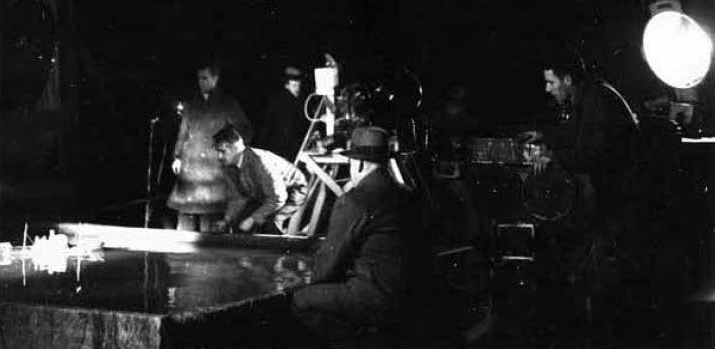
The ship, however, was only some 18 inches in length, the ocean on which she laboured was a 15ft. tank, the water was coloured by the copious use of blue-bags [a laundry agent] and the foam produced by soap suds. It was the first ‘shot’ in the making of a new talkie, Mystery Island. A day and a half were occupied in producing this scene, only about 45ft of which will be used in the picture. It will be the prelude to the story of castaways on a desert island.”
Even when the entire “company of 30 film artists, technicians, and cameramen” returned from Lord Howe Island in early October, misinformation about the location of the film was still being peddled to the press: the Sun (6th October, 1936) reported “With the rest of the cast and production staff, Miss Laidley made Venture Inn at Lord Howe Island a base, and travelled daily to an island five miles away where most of the ‘shots’ were taken [my italics]. The “island five miles away” was in fact Salmon Beach at the south end of Lord Howe Island.
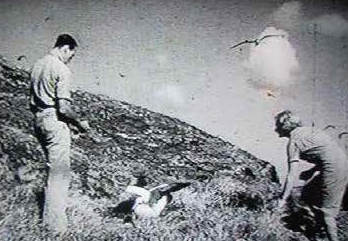
A short segment was also filmed at Old Settlement Beach, and another on Roach Island where “owing to a sudden fierce storm [the crew were] marooned … for a whole night at the conclusion of a day’s work”.
So the first mystery – the general location of the film – was eventually revealed to be Lord Howe, although ambiguities remained about where, exactly, the action had been shot. A further issue was how the film crew managed to create the illusion of a deserted island when the real island had 175 inhabitants, farms, roads, wharf, boats and multiple public buildings?
The next episode will look at the creation of the mythically uninhabited, celluloid, Mystery Island.
To Be Continued …
This article appeared in The Lord Howe Island Signal, 31 January 2021.

